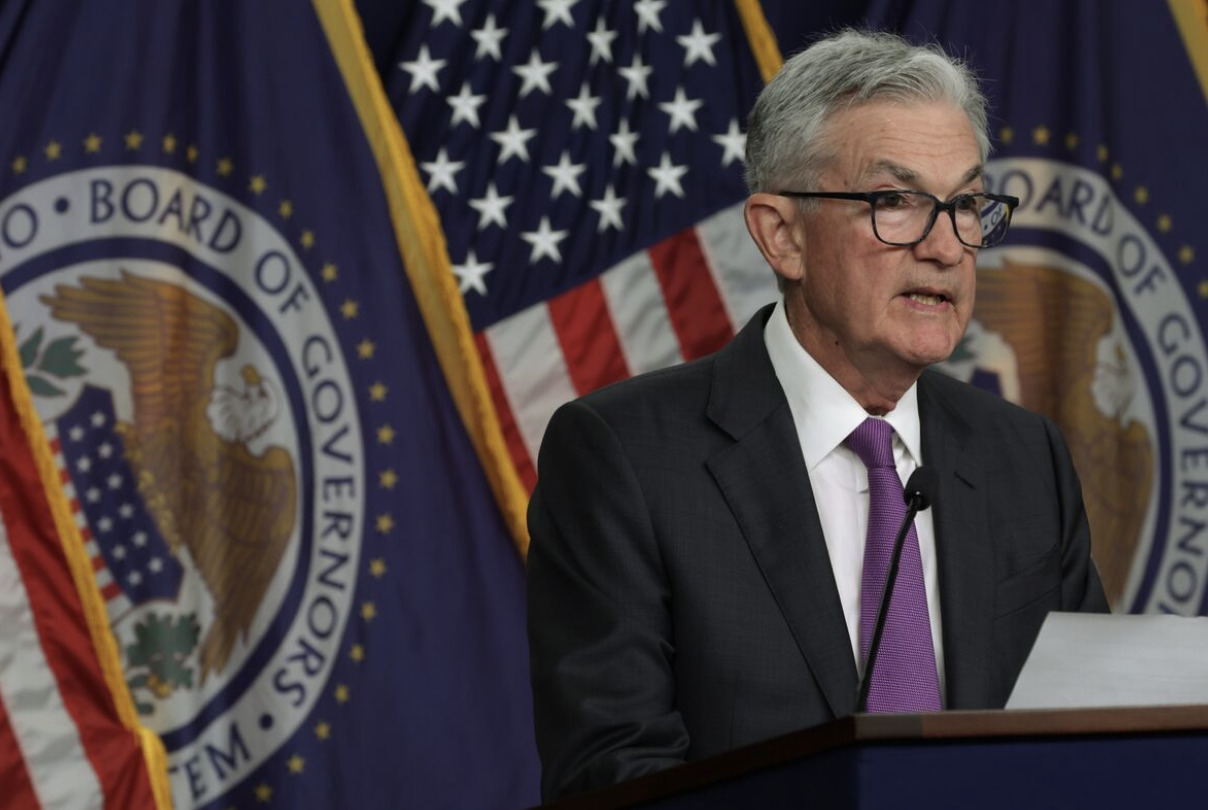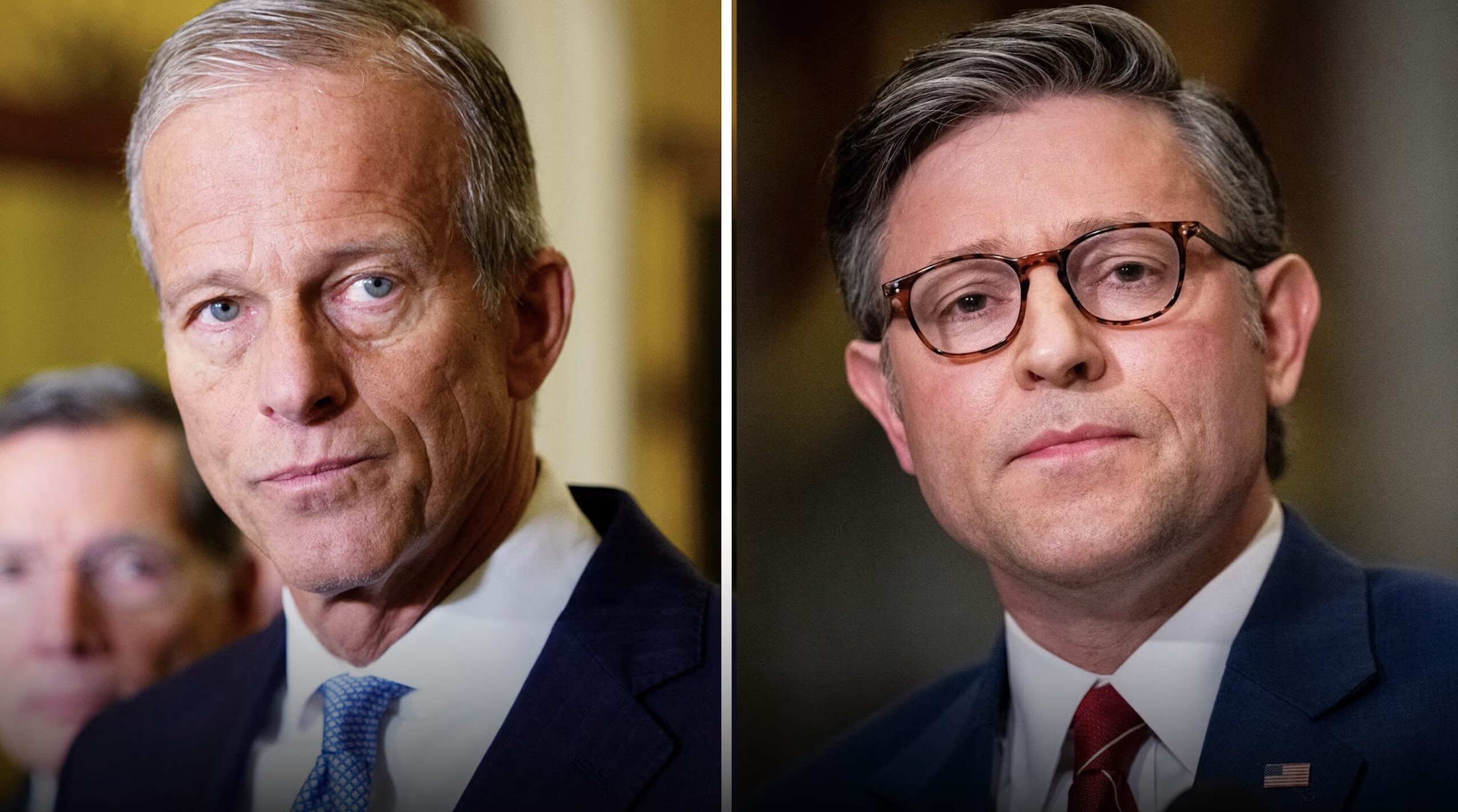
Neal Katyal on Challenging Trump’s Global Tariffs
On this special edition of the show, Barry sits down with Neal Katyal, Milbank LLP partner and former acting Solicitor General of the US. Barry…
Thought Leader: Neal Katyal

I am old — I turn 60 next year. So I don’t believe in Santa Claus. I don’t believe in the Tooth Fairy. And I am pretty darned skeptical about Jay Powell’s “soft landing,” too. I’ve seen enough Fed chairs over the years to know that managing monetary policy is not in the least like flying a plane. If the world’s pilots had the same success rate touching down as the world’s central bankers at achieving price stability, most of us would opt to drive or sail.
What, you may wonder, am I complaining about? We got the latest US inflation numbers on Thursday and they were fine. The headline consumer price inflation rate in July was 3.2% year-over-year, up only a sliver from 3% in June. From those who prematurely predicted that inflation would be “transitory,” we now hear claims of vindication. As Humpty Dumpty says to Alice: “When I use a word, it means just what I choose it to mean — neither more nor less.” Inflation has been above target for nearly two and a half years. Whenever it returns to 2%, we’ll be told: “That’s what we meant by transitory!”
The most recent inflation data might seem to suggest that I and others were wrong to warn of a reprise of the 1970s. The optimists have been gaining ground since last spring’s banking crisis faded from the news. Now it’s verging on mainstream to suggest that the economy can return to the Fed’s target of 2% inflation without a recession.
I keep having to remind people that the dream of pain-free disinflation was a recurring delusion of the 1970s. The only times the Fed succeeded in bringing inflation down in that unhappy decade there were recessions: in 1970, 1974-75 and 1980.
Now, I am not insisting that history repeats itself, because it doesn’t. Nor am I going so say that it rhymes, because history is much more like blank verse, if not stream of consciousness prose in the style of James Joyce’s Ulysses. It’s just a useful heuristic to juxtapose this decade with previous ones. So let’s take seriously the analogy preferred by such Team Transitory luminaries as Viktor Shvets of Macquarie Group Ltd., which is that the inflation of 2021-22 resembled the bursts of inflation that followed World War I and World War II.
This was not an inherently bad line of argument, especially in the case of World War I. True, the Covid-19 pandemic was not as lethal in relative terms as the 1918-19 influenza pandemic, which killed a larger share of the world’s population and vastly more young people. On the other hand, the fiscal and monetary measures used by Western governments to offset the effects of lockdowns since 2020 were in some ways similar to world war finance.
However, to conclude from the experiences of the 1920s or the 1940s that we are heading for an economic soft landing is to disregard historical reality. In each case, the postwar burst of inflation was ended by recession and a painful bout of deflation, followed soon after by a boom. In terms of both inflation and growth, the postwar eras were highly volatile by the standards of the more recent past. It is much too soon to rule out a comparably bumpy ride in the 2020s.
Big wars and pandemics had big impacts on the US price level
Consider where we are. Headline inflation has come down rapidly, considering that it was above 9% in June last year. “Non-core” inflation — the inflation rate for food and energy, which the Fed strips out to calculate “core” inflation, but which the public really notices — is now negative. We can reasonably anticipate further downward pressure from shelter and used cars in the coming months. As the Wall Street Journal’s James Mackintosh noted last week, if the US measured inflation the way Europe does, without including owners’ equivalent or imputed rent, core inflation would already be down to 2.3%.
And all this has been achieved without any of the labor market pain we associate with a recession. The US economy has continued to add jobs this summer at an impressive rate. The unemployment rate (3.5%) is back down to where it was before the pandemic — a rate we hadn’t seen for half a century.
A key part of the story is obviously that President Joe Biden’s administration is providing more than $2 trillion to subsidize investment in infrastructure, green technology and microchips. But there is also the resilience of the housing market, as Torsten Slok of Apollo Management recently noted, illustrating how much less sensitive Americans are to rises in mortgage rates than they were 15 years ago.
So investors this year have enjoyed climbing the proverbial wall of worry. Despite more than 500 basis points of interest rate hikes, stocks in late July were just 3.8% below their December 2021 peak. Meanwhile, the second-largest economy in the world has the opposite of an inflation problem. Annual consumer price inflation in China was minus 0.3% in July, according to data released last week. Producer prices declined by 4.4%, reflecting a slowdown in Chinese growth and a slump in both exports and imports. This is more reminiscent of Japan in the 1990s than just about anywhere in the 1970s.
Yet developments in China also illustrate the weakness of the soft-landing metaphor. Unlike planes, economies can sometimes descend from the air, hit the runway — and then keep going down, ploughing through the tarmac and into the subsoil. An alternative metaphor is the once-popular “Goldilocks economy,” which was supposedly neither too hot nor too cold. As anyone who regularly cooks porridge will confirm, it is only very briefly at the “just right” temperature. Before that, it scalds your children’s lips. Not long after that, it’s cold and unappetizing.
One of the obvious signs that the US economy is still too hot for Goldilocks is that average hourly earnings are rising at an annual rate of 5.1%. The Teamsters recent deal with United Parcel Service Inc., in response to a strike threat, was notably generous. The United Auto Workers are currently seeking a 40% pay increase. That is not the way back to 2% inflation. And, as former Treasury Secretary Larry Summers said a month ago, “You don’t stop wage inflation without a significant slowdown in economic activity.”
How might the US economy go from too hot to too cold? First, there is a distinct possibility that inflation prints in the autumn could push the annual rate back up toward 4% or even higher, because of so-called “base effects” (more slowly rising denominators from the second half of last year combined with higher than expected monthly changes). If the Federal Reserve responds by hiking another 25 basis points later this year, it would take the majority of investors by surprise. Yet recent upward moves in long-term bond yields are partly telling us not to assume this hiking cycle is over.
Those rising yields are also telling us that fiscal policy is indefensibly loose. The same message was delivered by Fitch Ratings Inc. on Aug. 1, when it stripped the US of its AAA credit rating. Say what you like about ratings firms — and people certainly did so when S&P Global Ratings made the same move back in 2011 — this time looks a lot different. The Congressional Budget Office last week raised its estimate of this year’s deficit to 6.5% of GDP. That is an indefensible figure when the economy is at full employment. As Fitch notes, the nasty fiscal arithmetic of rising rates on a large stock of debt is already kicking in.
The US ratio of interest payments to revenue is projected by Fitch to reach 10% by 2025, compared to a 2.8% average for the other AA-rated sovereigns and 1% for the AAA-rated. That arithmetic will get very nasty indeed if the inflation-adjusted rate on the debt rises above the economy’s underlying growth rate.
Everyone learns in undergraduate economics that monetary policy acts with long and variable lags. But the time from the moment the yield curve inverts (when short-term interest rates rise above long-term ones, as happened July of last year) to the start of a recession can range between four and 16 months. The ways higher rates operate on the economy are complex, but one thing is sure: They are bad news for all debtors who need to refinance their liabilities in the year ahead.
As the FT’s Martin Wolf recently reminded us, higher rates are also bad news for banks that made a lot of low-rate mortgage loans before 2022, or accumulated government bonds on their balance sheets. Last week, Moody’s reduced its credit ratings for 10 smaller US banks and said it was reviewing six larger ones. That was a reminder that the crisis that blew up Silicon Valley Bank and others last spring is not really over. Like the savings and loan crisis of the 1980s, it may have only just begun.
How can five additional percentage points of borrowing costs not profoundly affect an economy that is much more leveraged than in the 1970s? As Bloomberg reported last month, the amount of high-yield bonds and leveraged loans more than doubled to $3 trillion between 2008 and 2021. Around $70 billion of debt from companies owned by private equity firms is trading at distressed levels.
True, the share of corporate bonds — junk and investment grade — due be repaid or refinanced over the coming two years is down from 26% in 2007 to 16% today. But that’s still $790 billion of maturing debt in 2024, rising to above $1 trillion in 2025. According to Goldman Sachs Group Inc., each additional dollar of interest expense forces companies to lower their capital expenditures by 10 cents and labor costs by 20 cents, either by laying employees off or cutting their wages.
Similar pressures make themselves felt on governments with rapidly rising costs of debt service. And don’t forget the unpredictable effects of “quantitative tightening.” The Fed is not only raising short-term rates. It is also trying to shrink its balance sheet by reducing its holdings of longer-term bonds. As Powell acknowledged in testimony to the House Financial Services Committee in June, we have already seen that QT can have unexpected consequences in the bond market, especially at a time of rising bond issuance by the government.
The uncertainties associated with first inflation and then rising interest rates may explain why — despite falling prices, full employment and rising wages — ordinary Americans feel so dissatisfied with the economy. Last June, when inflation peaked, the Gallup Economic Confidence Index hit its lowest point (minus 58) since February 2009 (minus 64), at the nadir of the financial crisis. It has since recovered somewhat but remains surprisingly negative (minus 32 in June). It was firmly positive throughout President Donald Trump’s administration. For reasons that must worry Biden’s campaign managers, voters are a lot less enthused by “Bidenomics” than the objective state of the economy would lead one to expect.
If this is how voters feel before a recession, how might they feel if there is one between now and election day? With 41% approval, according to the latest polls, Joe Biden is doing better than Jimmy Carter at the same stage in his presidency (28%), but he is in roughly the same place as Gerald Ford and much worse off than George H.W. Bush. All three failed to secure a second term in the White House.
As I argued in the Spectator in May, Democratic strategists have achieved the first part of their master plan. A barrage of lawsuits is ensuring that Trump is the only candidate for the Republican nomination getting serious media coverage. The problem is that the second part of their plan — in which Biden beats Trump again in November of next year — is not guaranteed to work.
What would a Trump victory imply for the future of the economy? Paul Dans, who is running the Trump 2.0 transition project at the Heritage Foundation, summed up his vision as “the Manhattan Project meets the Empire State Building meets D-Day.” The one thing all three of those things had in common was that they cost a lot of money. It is a safe bet that Trump’s reelection would not usher in an era of austerity.
And if Trump were also to try to limit the Federal Reserve’s independence — which he might, according to Russell Vought, who ran the Office of Management and Budget in 2020-21 — the markets might be less than enthused.
Now add the geopolitical uncertainty of this year to the political uncertainty of next year. In Ukraine there is little sign of an imminent end to the war. The Wall Street Journal reported last week discussions about “a durable and fair peace settlement to the war” involving senior officials from 42 countries, with Saudi Arabia playing host. But the Russians weren’t there. It’s hard to end a war without both the combatants in the room.
Wars are inflationary. The longer this war lasts and the more powerful the weaponry deployed by each side, the more inflationary it will be, putting upward pressure on food and energy prices. Something similar goes for the new cold war between the US and China, which shows no sign of “thawing” as Biden hoped it would back in May.
In June, China’s National People’s Congress passed expansion of its national security law to enable stronger “countermeasures” against Western economic measures directed against Beijing. Those measures just keep on coming. Last week, Biden issued an executive order effectively prohibiting Americans from investing in some Chinese companies developing advanced semiconductors and quantum computers.
There is a powerful strategic logic to decoupling the US and Chinese economies. But nobody should pretend it won’t have costs. Globalization lowered prices. Cold War II inevitably has the opposite effect.
Future historians — if AI hasn’t condemned my species to extinction — will marvel at the amount of time economists in the 2020s devoted to calculating various measures of inflation to one decimal point. They will also wonder why such a bad analogy as landing a plane was used to explain the effects of monetary policy to the public.
This decade will not be identical to the 1970s. Nor will it replicate the experience of the 1920s or the 1940s. But the idea that we can recover from the fiscal and monetary excesses of the past three years without economic pain — at a time of political polarization and geopolitical conflict — seems historically implausible. Unless, that is, you still believe in Santa, the Tooth Fairy — and Goldilocks.
Neal Katyal on Challenging Trump’s Global Tariffs
On this special edition of the show, Barry sits down with Neal Katyal, Milbank LLP partner and former acting Solicitor General of the US. Barry…
Thought Leader: Neal Katyal
Erika Ayers Badan: Working For What You Want
Jennifer Fisher came by this week. She has a lot of energy and a spicy, strong, fuck-it-let’s-do-it vibe. Her baubles are also next level. We…
Thought Leader: Erika Ayers Badan
Pat Toomey: The GOP Needs a Growth Agenda
Journal Editorial Report: Paul Gigot interviews former U.S. Senator Pat Toomey. Looking for a voice of economic clarity and principled leadership? Former U.S. Senator Pat…
Thought Leader: Pat Toomey

